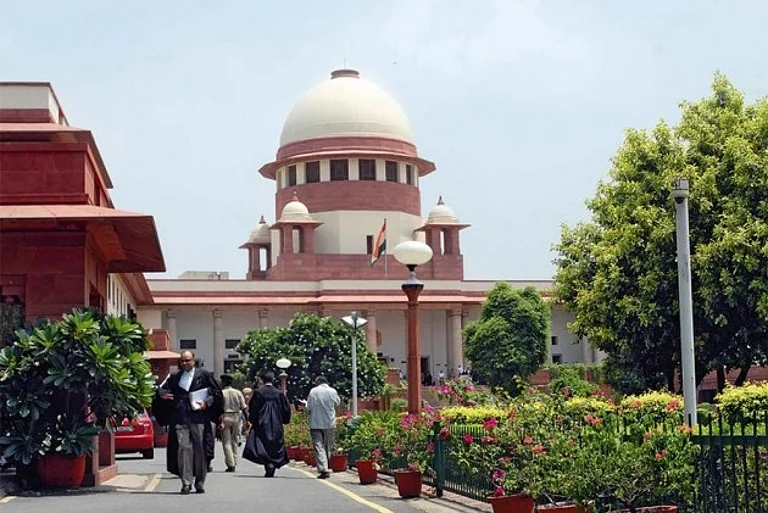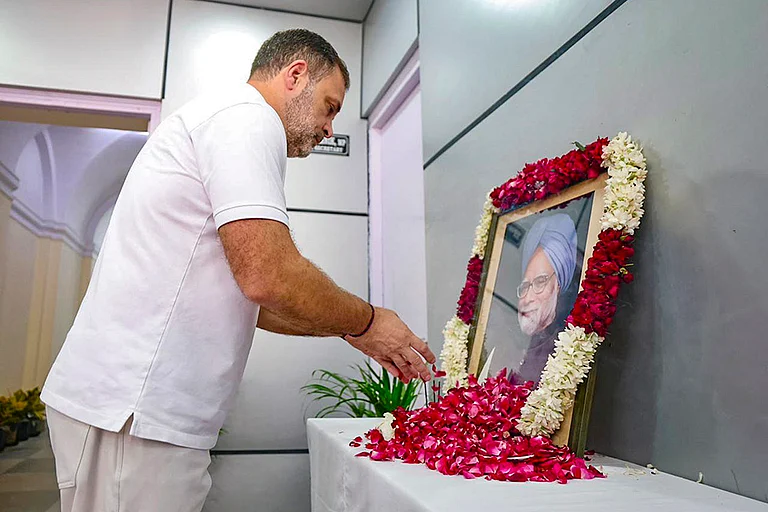A bride awaits her suitable dulha while the potential candidates all fight against one another; a white t-shirt with words like ‘scam’, ‘extortion’ and ‘fraud’ written on it is thrown into a washing machine and comes out clean with the writing “BJP Modi Wash” – these are just two of the most viral examples of how the political advertisements look like ahead of the Lok Sabha elections. If the electoral bonds data has shown us anything, it is that elections are fought on huge funds. A large chunk of this fund is spent on advertisements – whether banners, digital campaigns, print, TV or radio ads – created by some of the best minds in the industry. Political ads are made to capture the attention of voters towards a party’s promises and the work it has done, and sometimes, they also target the rival parties.
As the 2024 Lok Sabha elections drew closer, political parties stepped up their poll campaigns and more of these advertisements started appearing on our phones, TV screens and on the roads. Outlook takes a look at how these political advertisements are made, who is behind them and how much money is spent on them.
Making of a political ad
In any democracy, the question of a political party’s funding and expenditure is at the heart of discussions, especially ahead of elections. And over the years, the business of political backroom has gained dominance in India. The funding that political parties receive through donations by individuals and corporations is spent on consultancy firms that anchor the message of a party and develop ad campaigns in digital, print, TV and radio formats, as well as posters and banners we see on the roads.
Political consultants sit with leaders to understand their vision, prepare an outline based on the requirements and goals and come up with a time-bound plan to achieve it. BJP’s viral ‘Dulha Kaun Hai’ film was, for instance, made by Varahe Analytics, whereas, according to media reports, Congress hired advertising agency DDB Mudra for its ads ahead of the general elections. Other leading firms known for making political ads include IPAC, ABM and Inclusive Minds.
Money spent by political parties on online advertisements
According to the data provided by Meta and Google, over the last three months, political parties in India have spent more than Rs 100 crore in advertising. This is nine times the amount spent by parties in 2023 – a non-election year – at Rs 11 crore.
The data provided by Google Ad Transparency Centre shows Bharatiya Janata Party (BJP) is the top advertiser on its digital platforms, having spent Rs 38 crore between January and March, whereas Congress spent Rs 50 lakh in the same period.
Meta’s Ad Library report for the last 90 days (till April 5), on the other hand, shows that BJP (number 1 among India’s top 20 advertisers) spent Rs 6.7 crore on online advertisements, while Congress (number 4 on the list) spent Rs 1.4 crore in the same duration. The data also showed how much other regional parties spent – like Trinamool Congress (TMC), which spent Rs 89 lakhs, Telugu Desam Party (TDP) spent Rs Rs 10 lakhs and Aam Aadmi Party (AAP) spent Rs 6.9 lakhs. Separately, lakhs have also been spent by regional units of the BJP and Congress, specific campaign units of parties, as well as on individual leaders.
Apart from direct advertisement through political parties, the data from Google and Meta also revealed a large number of ghost and surrogate advertisers who run promotions and boost election campaigns of parties – dominantly of the ruling party.
The world of surrogate ads
Surrogate political advertisers are not necessarily directly affiliated with political parties but they manage to garner eyeballs across online and social media platforms through a variety of content genres – from memes and cartoon strips to video clips and spoofs – to convey information that favours a political party.
For instance, the Indian Political Action Committee (I-PAC), which has been running ads primarily for Jaggan Reddy’s YSRCP and TMC ahead of Lok Sabha polls, has spent Rs 6.5 crore on advertisements (Rs 4.3 crore in Andhra Pradesh and Rs 1.5 crore in West Bengal), as per Google between January and March. Another political consultancy firm, Populus Empowerment Network Private Limited (PEN), spent close to Rs 28 lakh to run ads in support of the DMK. PEN’s founder, V Sabareesan, is the son-in-law of Tamil Nadu Chief Minister MK Stalin.
The content in many surrogate advertisements is often targeted towards a rival party. A scan through these surrogate ads also shows that those favouring the BJP – at the Centre or in the state it is in power – tend to target Opposition leaders. A lot of them are often misleading, sometimes with communal undertones, and Meta has been accused of letting many of them pass despite its policy about social issues, elections or politics and the mandatory ‘Paid for by’ disclaimer.
For instance, a Facebook page called ‘MemeXpress’, which is among the highest ad spenders on Meta’s list (Rs 1.2 crore in 90 days till April 5), has made a series of memes targetting Arvind Kejriwal, Mamata Banerjee and MK Stalin over their “scams”. One of the ads showed the moment when gangster and former politician Ateeq Ahmad was shot dead on live TV, alongside a clip of TMC strongman Shahjahan Sheikh with a caption that read: “Bas ek bulldozer chahiye Bengal me… sabhi akdu Shahjahan seedhe ho jayenge (Just need a bulldozer in Bengal to straighten all the stubborn Shahjahan).”
Another page called ‘Mudde ki Baat’ has spent Rs 46 lakhs on ads in three months posted a reel titled “The Blunders of Pandit Nehru” about many of the accusations the BJP has made about Congress. ‘Mudde ki Baat’ also made a reel where Congress leader Rahul Gandhi can be heard purportedly saying “In Hindutvadion ko bahar nikalna hai (These Hindutvadis need to be driven out of the country).” The bottom part of the video showed Congress’ symbol on Pakistan’s flag. Similarly, a page called ‘Ulta Chasma’ has spent more than Rs 1.7 crore on similar sponsored memes, while another called ‘Bharat Todo Gang’ has spent Rs 14 lakh in the past three months.
There are similar pages making ghost and surrogate ads favouring opposition parties too, but the funding and range of pages are highly disproportionate towards the ruling party. Oftentimes, these ads run without even having proper disclaimers and by the time they are removed, they garner thousands of views and are reshared on multiple platforms.
The laws around political advertisement in India are not stringent enough, especially for social media. The Election Commission of India (ECI) has set a limit of Rs 95 lakh for individual candidates but for a country like India which is dependent on parties, not individual leaders, it is pertinent to bring in better rules for advertisements.
As per Google Ads, the value of political ads has been the highest in Uttar Pradesh, followed by Odisha, Andhra Pradesh, Tamil Nadu, Maharashtra and Gujarat. Video ads have accounted for 83.8 per cent of ad spends, followed by images (16 per cent) and text (0.2 per cent). On Meta, the highest spending in political ads has been in Andhra Pradesh, followed by West Bengal, Maharashtra, Odisha, Uttar Pradesh and Tamil Nadu.




























